

Harvey’s PhD student, Chris Kavanagh, was the one leading this particular fieldwork in Shakotan. A group of us from Hokkaido University, assisting in the data collection, would be there for two days, staying at a local inn. And though the footage above that I took makes the work look all rather glamorous, there was in fact a lot of preparation involved, not least of all was getting to Shakotan from Sapporo City.
We rented a car for that purpose, and enjoyed the scenic road around the Shakotan Peninsula. Arriving at the accommodation, it was straight to work, doing last minute preparation of surveys…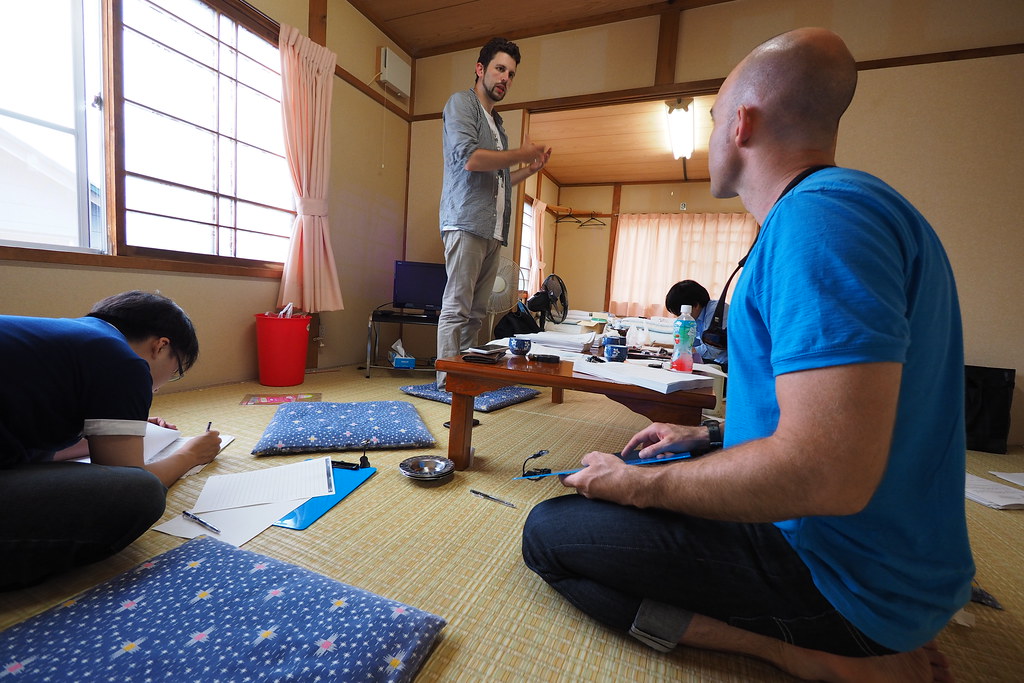
And counting out the payment for participation, paid to everyone who would take part in the survey.
We headed over to the shrine, just a short drive away, at dusk, to see if we could collect some responses from locals in the area. While the shrine officials were welcoming (we had contacted them in advance), it felt difficult to approach people out of the blue. A smile and a flash of our official-looking Hokkaido University badges helped put people at ease, however, and we managed to get some good baseline responses.
The main event, however, would be the next evening, so we retired relatively early, in order to get ready for the next day’s festivities. Breakfast the next morning, included in the accommodation package, was incredible. Typical rural Japan coastal meal, it consisted of almost more than we could eat…raw fish, cooked fish, pickled fish…amazing. We were well powered for a long day ahead.
Much of the morning and early afternoon was spent wandering around town, talking to locals, to get a local perspective on what the festival was all about. I walked around some of the local shops and chatted with the shop keepers, the majority of whom have lived in the area all their lives. To most of them, the festival was just part of the yearly happenings, and something that they would take part in if requested by others involved.
As the day wore on, crowds started to gather at the small shrine, and we got into our high gears, approaching young and old to survey about the ritual and how it made them feel.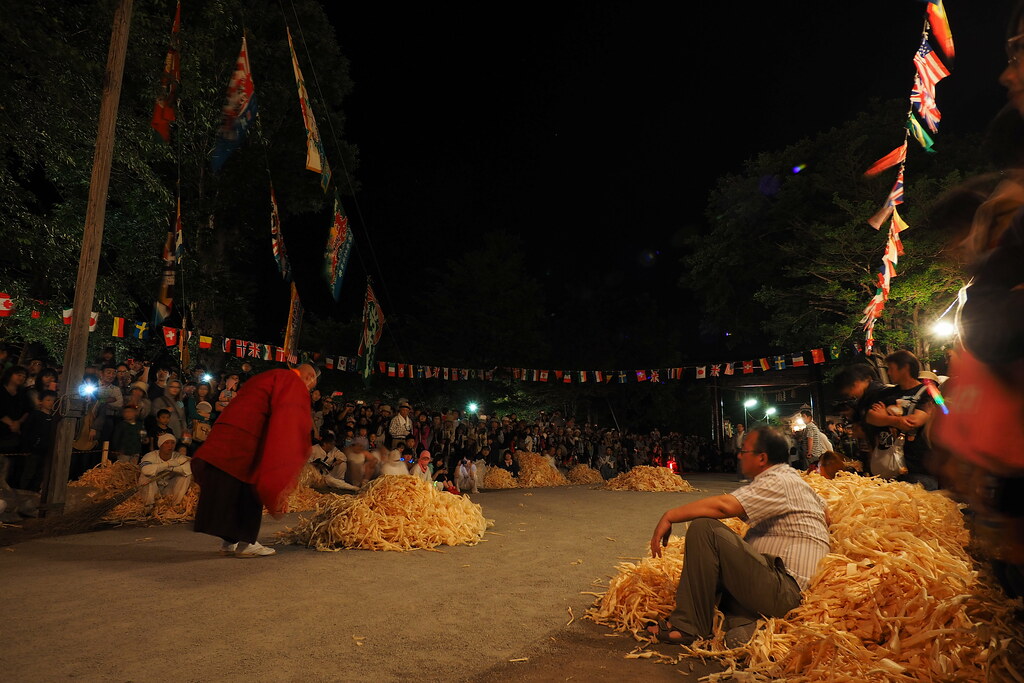 Soon it was impossible to catch people’s attention, as the festivities were about to start. We stopped approaching people and hunkered down to catch a glimpse at the firewalking.
Soon it was impossible to catch people’s attention, as the festivities were about to start. We stopped approaching people and hunkered down to catch a glimpse at the firewalking.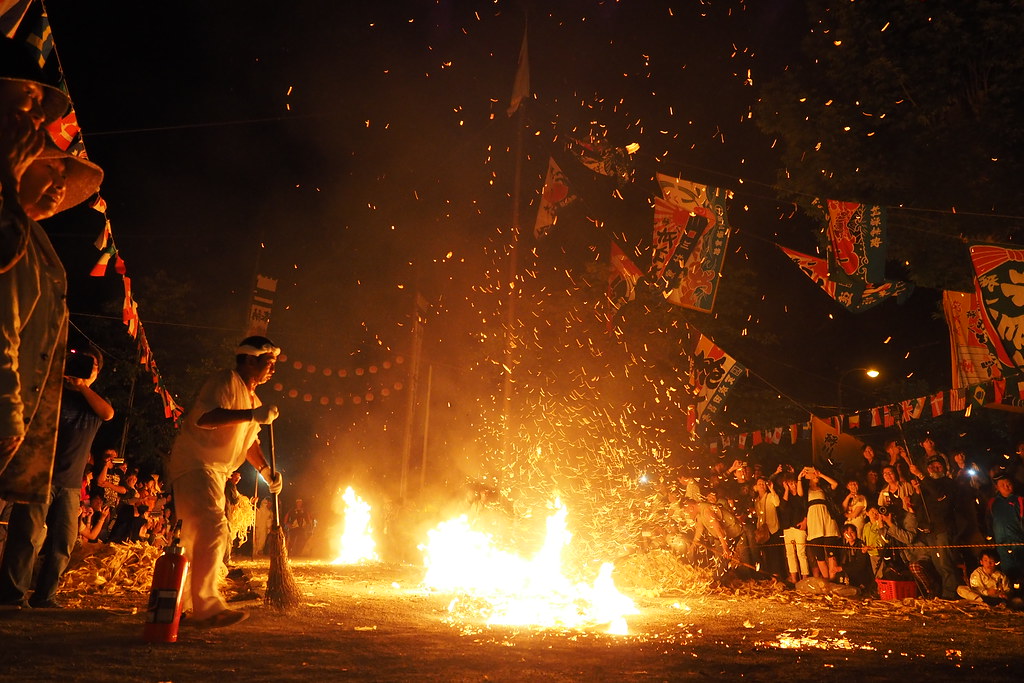
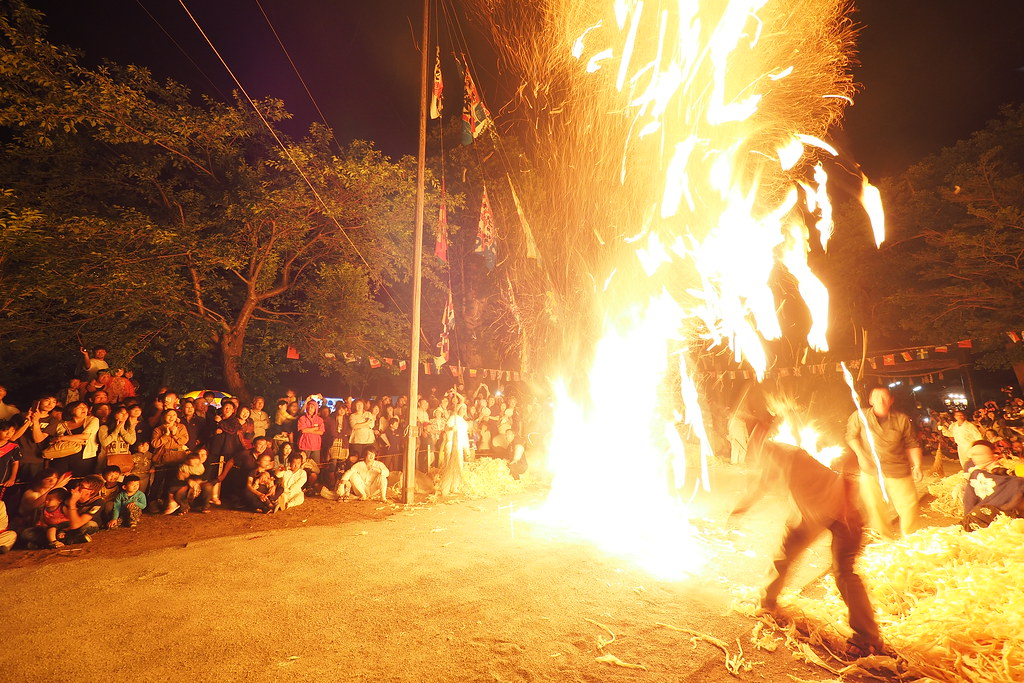 The firewalking lasted around 30 minutes, after which there was a mass exiting of the onlookers from the shrine area. It was all we could do just to get a dozen or so post-ritual respondents each. Everyone just wanted to get home and celebrate (and not spend 20 minutes responding to a survey with a pen and paper in the dark). On subsequent field trips, we would do away with the pen and paper, and use iPads instead.All in all, however, for Chris’s first bout of field work in Japan, it went really well. We made a great team. From left: Shuhei, Yo, Chris, Masaki, and me.
The firewalking lasted around 30 minutes, after which there was a mass exiting of the onlookers from the shrine area. It was all we could do just to get a dozen or so post-ritual respondents each. Everyone just wanted to get home and celebrate (and not spend 20 minutes responding to a survey with a pen and paper in the dark). On subsequent field trips, we would do away with the pen and paper, and use iPads instead.All in all, however, for Chris’s first bout of field work in Japan, it went really well. We made a great team. From left: Shuhei, Yo, Chris, Masaki, and me.


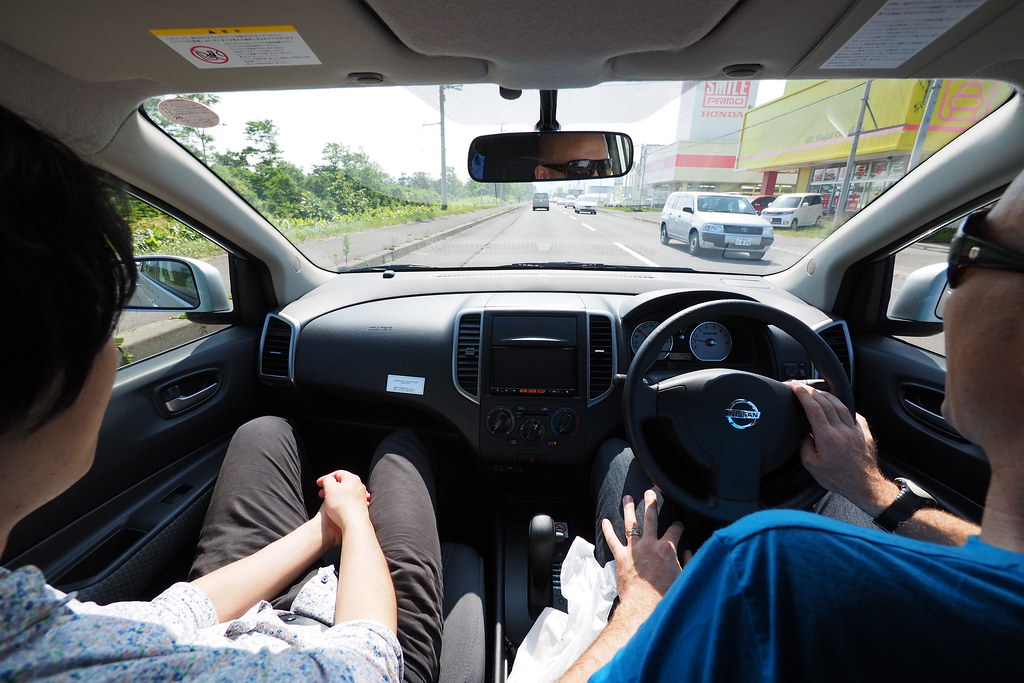
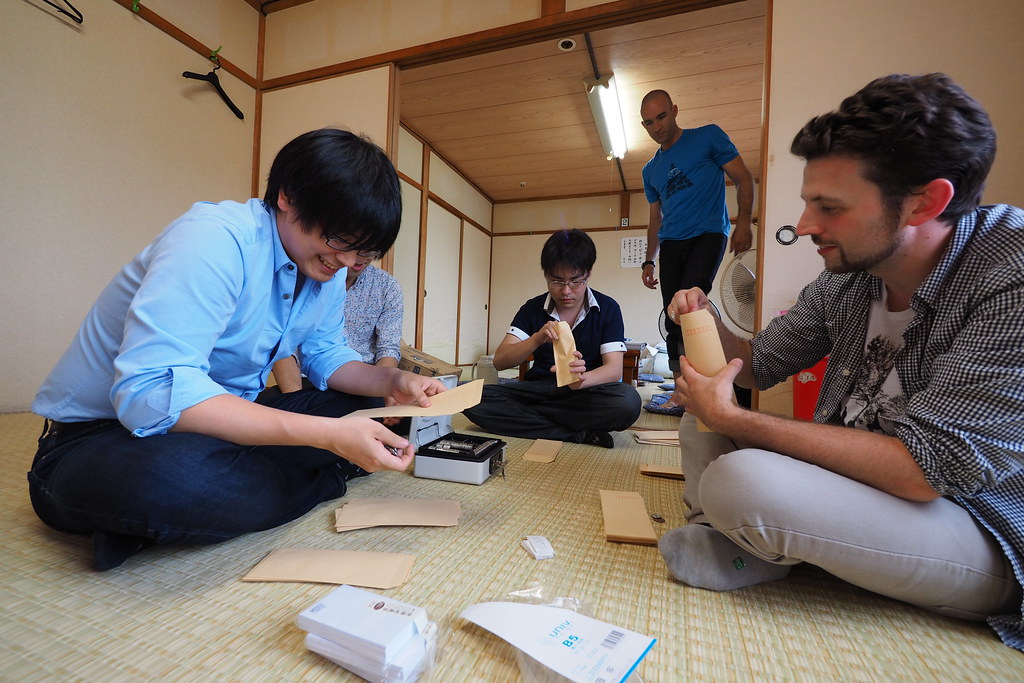
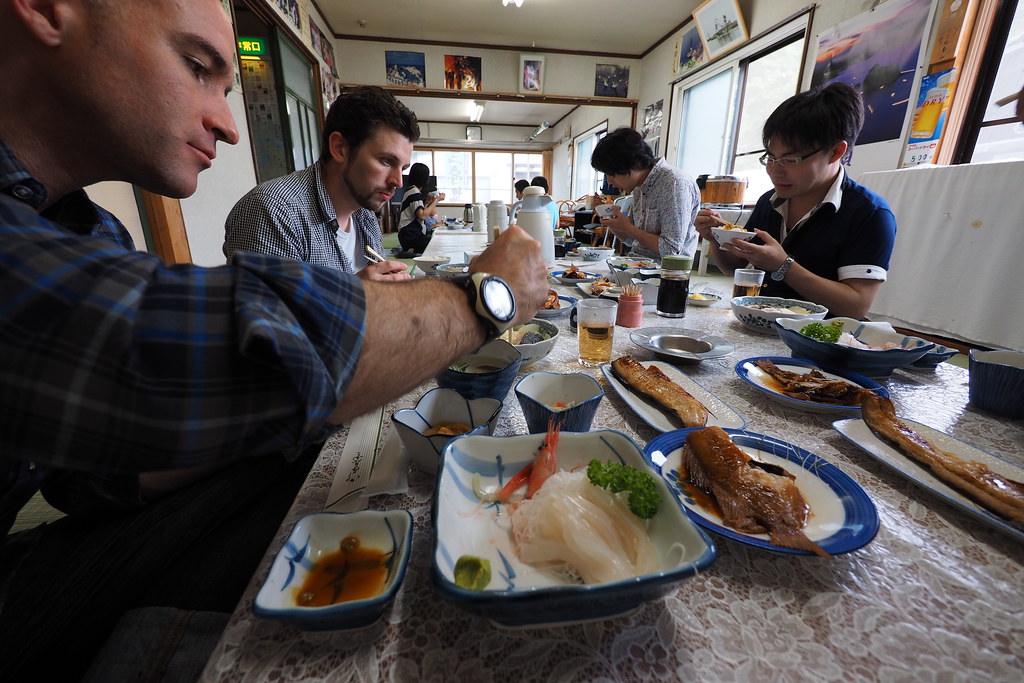
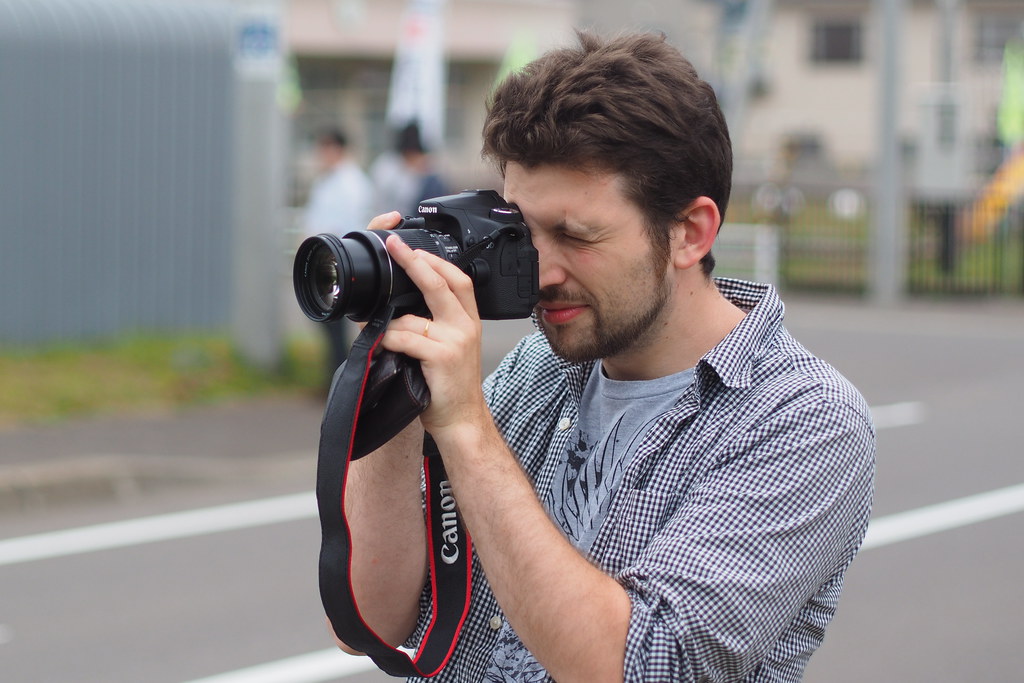
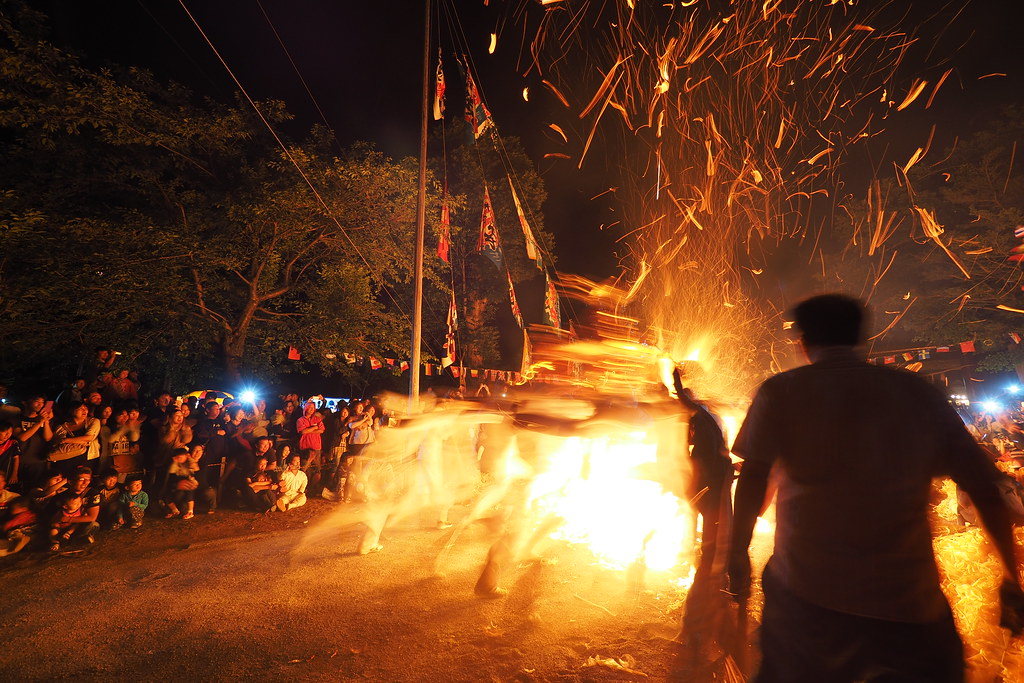
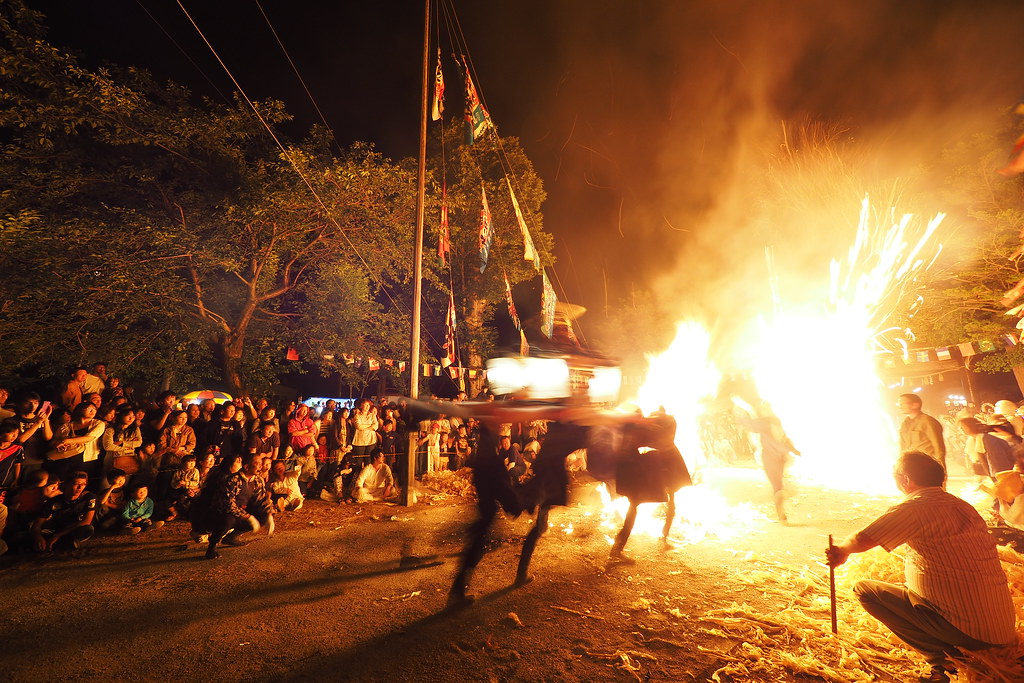





2 thoughts on “University of Oxford fieldwork in Shakotan Village, Hokkaido, Japan”
Great work Rob. Fascinating event.
Thanks Lyn! It was interesting to hear how locals viewed the event…definitely part of their identity as Shakotan residents!